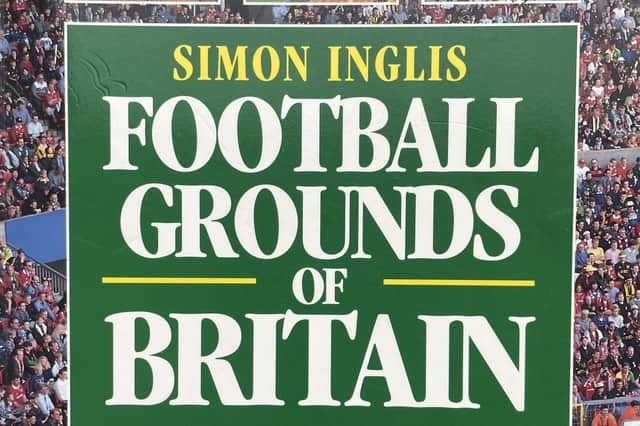Passions: Why football stadiums are often more interesting than the game itself


I was always aware of the grounds, of course: Greenock Morton’s across the river, the great football temples of Ibrox, Celtic Park and Hampden up the M8. You could glimpse the differences in their architecture from the Sportscene highlights on TV.
But it wasn’t until I chanced upon Simon Inglis’ Football Grounds of Britain that I realised just how bespoke every ground was, how rich the architectural history was, why they meant so much to fans.
Advertisement
Hide AdAdvertisement
Hide AdAll life was played out on those slopes. There were the sheds for the hardcore fans, the awkward gable ends to fit in roads and railways (hello Starks Park), the extraordinary monuments to success (Villa Park, Highbury), and of course the tragic backstory to the rebuilding of Ibrox Park.
Inglis, the don of stadium spotting, writes in another book – Sightlines: A Stadium Odyssey: “I would say that, much as I like sport, I prefer stadiums” – and it’s hard to disagree. No matter how bad the game, stadiums rarely disappoint – especially the older ones.
They are often monuments to wild, sometimes ruinous optimism, conceived to be “The Wembley of X” – of the South, at Selhurst Park, or of the North, at Port Vale. Neither came close, but a good thing too. Selhurst remains a gloriously atmospheric throwback, with its multi-generational hotch-potch of stands, while Port Vale has, only now, finished a long-running project: its Lorne Street stand, unfinished on my visit in 2003, finally got all its seats installed in 2020.
Inglis hasn’t updated his book in some time – perhaps he feels all those new boxy stadiums, built to replace grounds that were unfit for a post-Hillsborough world, are too dull to merit a new edition.
But there is still plenty to be discovered – indeed, there is a whole quarterly fanzine for the devoted stadium nerd, Groundtastic. Its pages document everything from the latest grand superstadium in the Middle East to a modest new tea hut somewhere in the British countryside. They’re all fascinating, the essential backdrops to a Saturday afternoon that can tell more of a story than the game itself.